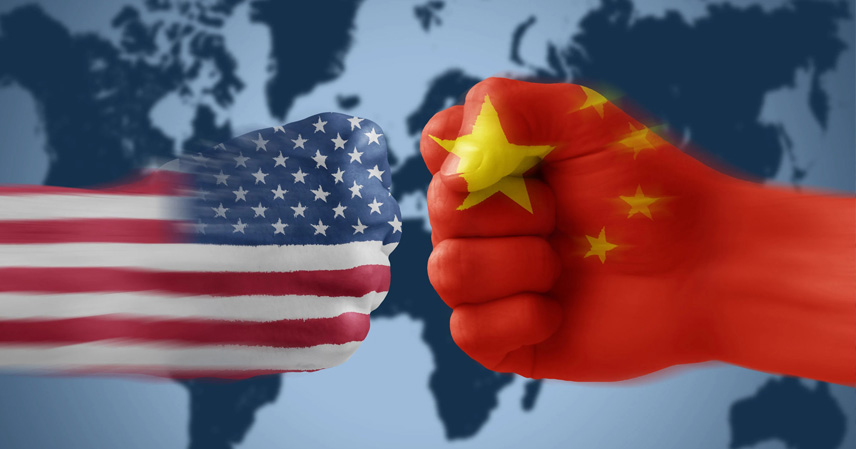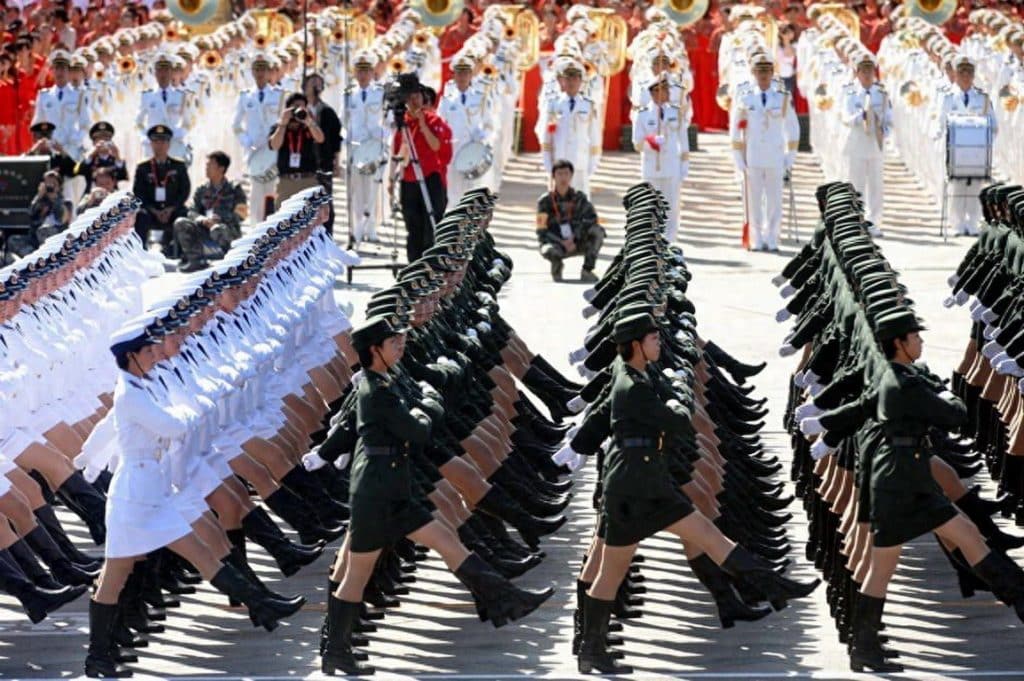If the U.S. were to lose the trade war with China, would it consider military action to destroy China? Some experts believe that if the trade conflict ends in U.S. defeat, Trump might turn to war as a final option. After all, war is often seen as an extension of politics, but given the military realities and the strategic calculations involved, such a move might be too risky for Trump, given his business-driven approach.
The Origins of the Trade War: A Slow Burn from 2018
The U.S.-China trade war began in 2018, with the original aim of addressing trade imbalances. However, the situation quickly escalated into a protracted battle. Trump’s administration first imposed 25% tariffs on $34 billion worth of Chinese goods, targeting machinery and electronics. China responded with retaliatory tariffs on U.S. exports, including soybeans and cars. By 2020, the Phase One trade deal was signed, with China promising to purchase an additional $200 billion in U.S. goods. However, the actual implementation was only around 70%, with issues such as intellectual property and forced technology transfer remaining unresolved.
By 2025, with Trump back in office, tariffs had increased to 10%, covering a broader range of products. The global supply chain continued to shift, with over 200,000 U.S. manufacturing jobs lost, while China’s export resilience far exceeded expectations. This ongoing tug-of-war exposed the U.S. economy’s dependence on imports of Chinese electronic components, making any trade war loss a significant internal pressure point.
The “War as a Political Tool” Debate
If the trade war were to end in a U.S. concession, resulting in economic losses running into the trillions, Trump and his team might be forced to consider extreme options. Experts suggest that, according to Clausewitz’s theory, war is sometimes viewed as an extension of politics when other options have been exhausted. Trump has, at times, boasted about America’s military superiority, hinting that he would use force to make China comply. However, in practical terms, this idea has remained more talk than action. The risks are simply too high.
The U.S. spends 40% of the world’s military budget, with 11 aircraft carriers patrolling the Pacific. Yet, China’s defense relies on its strategic geography, and its Dongfeng missiles cover the Western Pacific. Any U.S. naval presence would make an easy target. According to simulations by the Rand Corporation, in the first week of conflict, the U.S. could lose three aircraft carriers, and logistical supply lines would face severe disruptions.
The Nuclear Balance: A Deterrent Against War
The nuclear deterrent further dampens any military fantasies. China has over 300 nuclear warheads, while the U.S. has around 3,000. The principle of mutual assured destruction (MAD) ensures that any first strike would be suicidal for both sides. Experts argue that unless both countries find themselves at an absolute deadlock, neither will easily cross the nuclear threshold, even in the event of conventional conflict, which could quickly escalate into direct missile confrontations.
Moreover, the financial cost of war is another deterrent. The U.S. spent $2.3 trillion on the wars in Iraq and Afghanistan. A direct conflict with China would be far more expensive, with inflation potentially rising by 12%, a stock market crash, and unemployment hitting 15%. Trump’s pragmatic business mindset makes such a high-risk, low-reward gamble unappealing.
Economic Interdependence: The Case Against Military Action
The deep economic ties between China and the U.S. make the military option even more implausible. The U.S. imports hundreds of billions of dollars worth of consumer goods from China, including Apple phones and products found on Walmart shelves. Any disruption in this supply chain would cause massive domestic chaos. The trade war has already raised costs for U.S. businesses, and a shift to military conflict would send shockwaves through global markets, leading to plummeting stock prices and further job losses from Detroit to Silicon Valley.
While China’s economy continues to show resilience, with exports to the U.S. still growing by 8% in 2025, the country’s robust domestic market and the “Belt and Road Initiative” buffer against external shocks. China has proven its ability to weather economic pressure, making the idea of a military confrontation even more unfeasible.
Public Opinion and Political Reality
Public sentiment in the U.S. also plays a significant role. Americans are exhausted from overseas conflicts, with a Gallup poll showing 73% of citizens opposing new wars. The scars of Iraq remain fresh, and any push for military action against China would likely trigger a major political backlash. A significant portion of the Republican Party is divided on the issue, and any escalation into war could easily become a political disaster for Trump, especially with the 2028 elections on the horizon.
Additionally, Western allies, particularly Germany and Japan, are unlikely to support a military campaign. Germany’s car exports to China account for 30% of its market, and Japan, at a recent summit, indicated it would not deeply engage in military action against China. For these countries, economic interests far outweigh any potential involvement in a U.S.-led conflict with China.
A Path Toward Containment, Not Conflict
The expert consensus is that if the trade war fails, the U.S. is more likely to lean toward low-intensity containment strategies rather than high-risk military confrontation. Measures such as chip export bans have already severely impacted Huawei, while the U.S. continues to bolster its military presence in the Indo-Pacific and strengthen alliances to restructure global supply chains. These strategies are slower and less dramatic but serve to slow China’s rise without triggering an all-out conflict.
In 2025, the U.S. extended a 90-day tariff truce and shifted toward tech barriers, limiting the flow of advanced semiconductor equipment to China. Historically, the U.S. has relied on force to resolve disputes, but against a growing and resilient China, military options now seem like a last resort, not a first choice. The trade war has shifted from tariffs to semiconductor and rare earth battles, with handshake deals dominating the headlines, while military action remains conspicuously absent.
Long-Term Strategic Rivalry: Who Will Blink First?
The U.S.-China competition is not limited to trade but is evolving into a broader strategic contest. America’s problem lies in its overconfidence. While force worked in the past, the growing power of China and its economic resilience now make military options seem impractical. Experts warn that the only viable path forward for Washington is to maintain the competition without breaking it, as escalating the conflict would result in mutual harm.
The 2025 economic data reflects that while China’s GDP growth remains stable at 5%, U.S. inflation hovers at 4%. The trade war has hurt both sides, but the U.S. has not collapsed. Trump’s calculated pragmatism suggests that he will continue to use diplomatic pressure and economic leverage, avoiding the nuclear flashpoint. This battle is one of endurance—whoever blinks first will face the consequences.
References
- U.S. Trade Policy and Military Strategy: A Comprehensive Review, 2025
- Gallup Poll on American Public Opinion on Foreign Conflict, 2025
- Rand Corporation Simulations of U.S.-China Military Conflict, 2025
- The U.S.-China Trade War: Economic Impact Analysis



